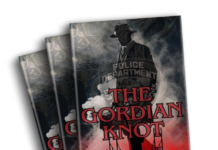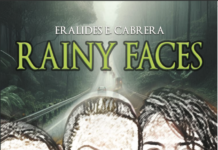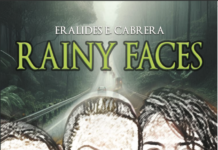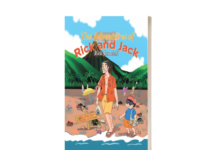We will highlight the most essential reads that explore love, growth, identity, and life lessons, helping you navigate your twenties and step into your thirties.

Turning 30 feels like a real shift. It marks the end of one chapter and the start of a new one. That change can bring some anxiety, and books can help you steady your mind. You can look at titles that guide you through your 20s and prepare you for the next stage. These books can offer comfort, clarity, and a calm push forward. And the best thing to remember is simple. So, enjoy it. Turning 30 is a blessing, and it can be fun, especially with these books in your hands!
House of Mirth by Edith Wharton (1905)
Truthfully, The House of Mirth stays with you long after you read it. The story centers on Lily Bart, a twenty-nine-year-old woman in New York society who feels the weight of expectations around beauty and status. The book was written in 1905, yet the pressure still feels familiar. You follow her slow fall from the center of every room to the edge of society. The writing is calm and haunting at the same time. You see how her world shapes her and traps her. The line about the bracelet feeling like chains says everything. This story stays in your mind and makes you think about choices, their freedom, and the cost of pleasing others.
Mrs. Dalloway by Virginia Woolf (1925)
You feel the pull of Woolf before you turn 30 because her language moves like water. Mrs. Dalloway captures her view on love and time in a sharp way. The book even turned into a small comfort meme during the pandemic. The world felt lost then. It felt the same in the period after the war when the story came out. The book sets the pain of Septimus against the calm face of Clarissa. Yet even Clarissa feels old fears rise in quiet moments. Woolf shows that your past can sit beside you. The book truly shapes the way you see each day.
Giovanni’s Room by James Baldwin (1956)
You step into Giovanni’s Room through a tragedy. Giovanni faces execution. David, an American in Paris, once loved him while his fiancée traveled in Spain. The story pulls from Baldwin’s time in Paris. The book was first rejected for its open look at queer desire. It came out in 1956 and drew mixed reactions. You read it now to see how David battles pride and deep shame. His cold actions show a pattern that people now call toxic masculinity. He feels trapped by the roles he sees in straight couples and also by his own desire. The result is a lesson in how love can break when fear controls you.
I Capture the Castle by Dodie Smith (1948)
This is one of those books people assume you read as a kid, yet it hits much deeper when you approach it with more awareness. The writer is known for the story with spotted dogs, but this earlier novel stands above it. You follow Cassandra, a sharp young narrator, as she describes her odd family with a mix of humor and quiet sadness. Her father fades in the gatehouse. Rose reacts to life with anger. Thomas stays cheerful even while clearly underfed. The story moves through this blend of light and heavy moments. Each line feels deliberate, and Cassandra’s voice rings with truth and charm.
The Group by Mary McCarthy (1963)
This midcentury novel feels old in some ways and very familiar in others. You see scenes that echo life now. You hear talk about work, life, love, and the pull of motherhood. The story follows a circle of friends from college into the years before the war. The writer said the book was not meant to be feminist, yet the way it shows the inner world of these women makes it hard to call it anything else. It gives shape to a deep sense of dissatisfaction that many women carry till now. It is not a tale of clear victory, but a reminder of the quiet barriers that still shape many lives.
The Transit of Venus by Shirley Hazzard (1980)
This book stays with you. It pulls you in with its rich language and quiet force. You follow a story about becoming a woman and learning what love and power can do to a life. Some say you need age to feel what sits inside these pages. You do not. The writing is deep and smooth. Each line feels shaped with care. You start to look at the world in a new way as you read. People often compare its effect to an experience you can only understand once you live through it. This book asks you to dive in now.
Self-Help by Lorrie Moore (1985)
You can pick any book by Lorrie Moore from those years and find something sharp and alive. If you have never read “People Like That Are the Only People Here,” you should start with it. Still, the early collection Self Help holds a rare spark. The writing feels simple on the surface but carries a wild mix of humor and pain. The voice is bold and the jokes land fast, while the stories cut close to real life and still feel playful. One piece even shows you the push and pull of wanting to write. This small book still feels like a discovery each time you open it.
Beloved by Toni Morrison (1987)
There is no wrong place to begin with Morrison. Still, Beloved often leaves the deepest mark. The story follows Sethe. She is a formerly enslaved woman living near Cincinnati with her daughter. She also lives with the ghost of her dead infant. The past moves through every part of the book. It feels like stepping into a wreckage that still breathes. The scenes stay with you long after you close it. The book shows a history that many try to soften, yet it keeps its full weight. It teaches more than many history texts and stays alive in your mind.
The Secret History by Donna Tartt (1992)
Donna Tartt’s first novel follows a tight college group that slowly falls apart after a violent act during one wild night. It is a story that hits harder when you are still close to your own college years. You remember the intense bonds. You remember the chaos. You remember how fast things can shift when people are young and unsure. Your friendships may not match the drama in the book, but the force of the story still lands. The book holds small truths inside all the mystery. One line stands out where she says love does not fix everything; anyone who believes that is making a mistake.
The Patrick Melrose Novels: Never Mind (1992), Bad News (1992), Some Hope (1994), Mother’s Milk (2005), and At Last (2012)
Edward St. Aubyn’s series follows Patrick Melrose from childhood to middle age with a mix of dark humor and sharp pain. The story begins with a summer in France that ends in a moment of trauma that shapes his life. Later, you see him lost in addiction while collecting his father’s ashes in New York. The books then follow his slow climb toward recovery, even as he faces funerals, family pressure, and the weight of memory. The standout moment comes in Some Hope, where a weekend party shows St. Aubyn’s wit at its brightest. Through every book, the writing makes Patrick’s struggles feel real, showing that money never protects anyone from harm or heartbreak.
Operating Instructions by Anne Lamott (1993)
Operating Instructions hits hard, even if you’re not a parent. Anne Lamott’s story of raising a child alone shows what it looks like to keep going when life feels impossible. You read about fear, exhaustion, low self-esteem, and the quiet strength that rises anyway. Two ideas stay with you. One is her honest talk about feeling unsure of herself. The other is her reminder that you often do the hard thing before you even realize you could. It is a book that makes you feel less alone in your own messy growing-up years.
Open Secrets by Alice Munro (1994)
Alice Munro is one of those writers you can start anywhere. Any one of her collections shows her deep empathy, layered storytelling, and characters who feel real. Many of her stories follow women in small Canadian towns trying to navigate a world that is not always kind. Open Secrets is a great place to dive in. The stories are long, but they feel alive and full of tension. Munro is often called a writer of domestic fiction, yet her work shows a sharp sense of danger. She knows how to build stakes and turn a quiet moment into something powerful.
Conversations With Friends (2017) and Normal People (2018) by Sally Rooney
Sally Rooney’s writing feels like a cold glass of rosé. It goes down easy and hits you fast. Her stories may sound simple on the surface. Young people. Love. Distance. But the way she tells them feels fresh and honest. You read about the messy pull in Conversations With Friends or the quiet pain in Normal People, and you start to see pieces of your own life in them. You may not have lived the same moments, yet the emotions feel close. Her books capture the rush of being young. Everything feels huge. Everything feels new. It is wonderful. It is rough. And it fades before you are ready. Rooney knows how to hold that feeling on the page.
Wuthering Heights by Emily Brontë (1847)
Like many, the Brontë sisters were first encountered in a high school classroom. Emily Brontë’s Wuthering Heights left a mark that grows stronger with time. The famous romance between Heathcliff and Catherine is only part of the story. The deeper thread explores generations, showing how faults and choices pass from parents to children and whether it is possible to rise above the past. Emily herself died at 30, a reminder of how brief life can be. Reading it now, closer to her age than to your teenage self, her insight feels alive. Her words linger, shaping how you see the world, quietly changing the way you think.
So, are you ready for your next reading night!?





















